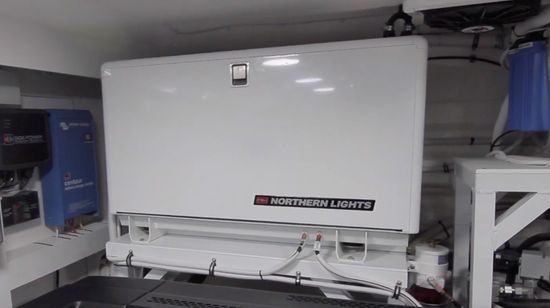Boat & Yacht Design
AC Generator Design and Installation


There’s a lot to think about in generator design and also how the unit is mounted in the boat. Generators are one of the most important items of equipment on a boat – and one of the more potentially dangerous. It is here that NMMA certification of ABYC standards is critically important. See just a few of the details boatbuilders and generator manufacturers must do in order to receive NMMA certification.

The Generator Itself
- Compliant generator sets are designed to operate in an ambient temperature of 122 degrees F (50 degrees C).
- The design also must allow for removal of the engine oil from the engine sump without spilling oil into the bilge, and there should be a dipstick or other means of determining the oil level in the engine as the generator is installed.
- By the same token, the belts on the unit should be able to be changed without dismantling any major part.

- Crankcase fumes cannot be discharged into the genset space, but may be vented into the airstream entering the air intake.
- The genset should be grounded to the DC negative, except in cases when the DC system is isolated. Ignition coils and magnetos must be mounted so that water cannot accumulate around the high voltage cap.
- The genset must be equipped with protective systems to prevent damage to the generator and exhaust when run with low oil pressure, excessive coolant temperature, or loss of exhaust coolant flow or high exhaust temperature in a wet exhaust system.

Regarding Cooling the Generator and its Exhaust
- Gensets that are liquid-cooled should have drains to allow for winterization.
- The cooling water from the genset with a wet exhaust system should provide cooling at all operating speeds (though bypasses are allowed when full flow would cause too much back pressure), and a raw-water cooling pump should be self-priming and operate whenever the genset is running.
- Heat exchange cooling systems in gensets with wet exhaust systems should have independent self-priming cooling pumps that operate whenever the genset is running.
- Metallic components of the generator and exhaust that come into contact with raw cooling water shall be galvanically compatible, and small components shall be of the same material or cathodic to the contacting metal alloys.
